The IP rating or ingress protection code is defined by the International Electrotechnical Commission (IEC). It classifies and provides a guideline to the degree of protection provided by casings and enclosures against intrusion of dust and contact with liquids.
IP ratings are important because they help to ensure the safety of people and property. They also help to extend the lifespan of electrical equipment by protecting it from damage caused by water, dust, and other hazards.
When choosing lights, it is important to consider the environment in which it will be used. For example, if the luminaire will be used outdoors, it will need to have an IP rating that is high enough to protect it from rain and snow. If the light will be used in a dusty environment, it will need to have an IP rating that is high enough to protect it from dust.
IP
| The first digit indicates the level of protection that the enclosure provides against access to solid parts. |
| The second digit indicates the level of protection that the enclosure provides against harmful ingress of water. |
| First Number Rating | |
|---|---|
| X | Means there is no data available to specify a IP rating with regard to this criterion. |
| 0 |  No protection against contact and ingress of objects. No protection against contact and ingress of objects. |
| 1 | 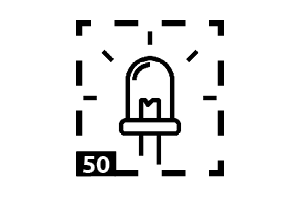 Any large surface of the body, such as the back of a hand, but no protection against deliberate contact with a body part. Protection from solid objects over 50mm in diameter. Any large surface of the body, such as the back of a hand, but no protection against deliberate contact with a body part. Protection from solid objects over 50mm in diameter. |
| 2 | 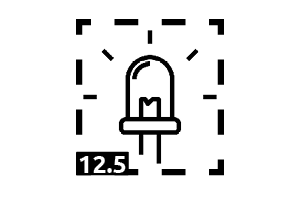 Fingers or similar objects. Protection from solid objects over 12.5mm in diameter. Fingers or similar objects. Protection from solid objects over 12.5mm in diameter. |
| 3 | 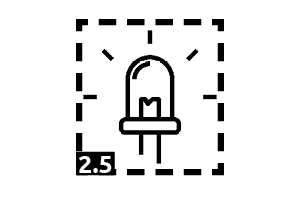 Tools, thick wires, etc. Protection from solid objects over 2.5mm in diameter. Tools, thick wires, etc. Protection from solid objects over 2.5mm in diameter. |
| 4 | 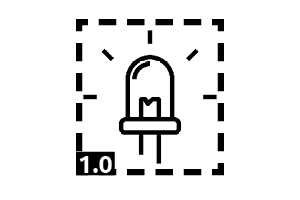 Most wires, slender screws, large ants etc. Protection from solid objects over 1mm in diameter. Most wires, slender screws, large ants etc. Protection from solid objects over 1mm in diameter. |
| 5 |  Ingress of dust is not entirely prevented, but it must not enter in sufficient quantity to interfere with the safe operation of the equipment. Ingress of dust is not entirely prevented, but it must not enter in sufficient quantity to interfere with the safe operation of the equipment. |
| 6 |  No ingress of dust; complete protection against contact (dust-tight). No ingress of dust; complete protection against contact (dust-tight). |
| Second Number Rating | |
|---|---|
| X | Means there is no data available to specify a IP rating with regard to this criterion. |
| 0 |  No protection against ingress of liquid. No protection against ingress of liquid. |
| 1 | 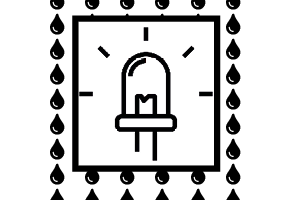 Dripping water (vertically falling drops) shall have no unsafe effect on the enclosure. Dripping water (vertically falling drops) shall have no unsafe effect on the enclosure. |
| 2 | 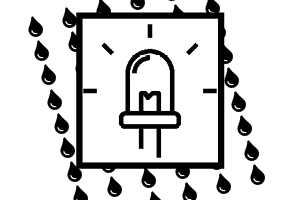 Vertically dripping water shall have no harmful effect when the enclosure is tilted at an angle of 15° from its normal position. Vertically dripping water shall have no harmful effect when the enclosure is tilted at an angle of 15° from its normal position. |
| 3 | 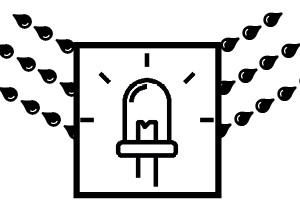 Water falling as a spray at any angle up to 60° from the vertical shall have no harmful effect. Water falling as a spray at any angle up to 60° from the vertical shall have no harmful effect. |
| 4 | 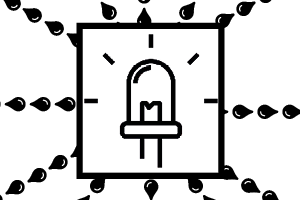 Water splashing against the enclosure from any direction shall have no harmful effect Water splashing against the enclosure from any direction shall have no harmful effect |
| 5 | 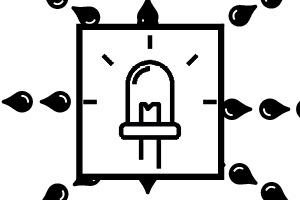 Water projected by a nozzle (6.3 mm) against enclosure from any direction shall have no harmful effects. Water projected by a nozzle (6.3 mm) against enclosure from any direction shall have no harmful effects. |
| 6 |  Water projected in powerful jets (12.5 mm) against the enclosure from any direction shall have no harmful effects. Water projected in powerful jets (12.5 mm) against the enclosure from any direction shall have no harmful effects. |
| 7 |  Ingress of water in harmful quantity shall not be possible when the enclosure is immersed in water under defined conditions of pressure and time (up to 1 meter). Ingress of water in harmful quantity shall not be possible when the enclosure is immersed in water under defined conditions of pressure and time (up to 1 meter). |
| 8 |  The equipment is suitable for continuous immersion in water under conditions which shall be specified by the manufacturer. The equipment is suitable for continuous immersion in water under conditions which shall be specified by the manufacturer. |
| 9K | 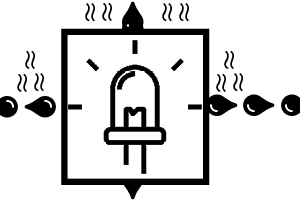 Protected against close-range high pressure, high-temperature spray downs. Protected against close-range high pressure, high-temperature spray downs. |
Additional letter (optional)
For the protection of personnel against access to hazardous parts with:
| Letter | Meaning |
|---|---|
| A | Back of hand |
| B | Finger |
| C | Tool |
| D | Wire |
Supplementary letter (optional)
For the protection of equipment specific to:
| Letter | Meaning |
|---|---|
| F | Oil resistant |
| H | High voltage apparatus |
| M | Motion during water test |
| S | Stationary during water test |
| W | Weather conditions |
For additional information and further reading see wikipedia
